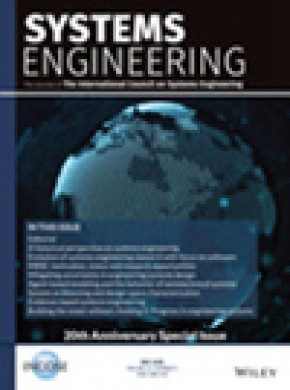
Gold OA文章占比:34.39%
OA被引用占比:0.1714...
開源占比:0.1626
研究類文章占比:91.76%
國際標(biāo)準(zhǔn)簡稱:SYSTEMS ENG
人氣 143
《Systems Engineering》是一本專注于ENGINEERING, INDUSTRIAL領(lǐng)域的English學(xué)術(shù)期刊,創(chuàng)刊于1998年,由John Wiley and Sons Inc.出版商出版,出版周期Quarterly。該刊發(fā)文范圍涵蓋ENGINEERING, INDUSTRIAL等領(lǐng)域,旨在及時、準(zhǔn)確、全面地報道國內(nèi)外ENGINEERING, INDUSTRIAL工作者在該領(lǐng)域的科學(xué)研究等工作中取得的經(jīng)驗(yàn)、科研成果、技術(shù)革新、學(xué)術(shù)動態(tài)等。該刊已被SCIE數(shù)據(jù)庫收錄,在中科院最新升級版分區(qū)表中,該刊分區(qū)信息為大類學(xué)科工程技術(shù)3區(qū),2023年影響因子為1.6。
Systems Engineering is a discipline whose responsibility it is to create and operate technologically enabled systems that satisfy stakeholder needs throughout their life cycle. Systems engineers reduce ambiguity by clearly defining stakeholder needs and customer requirements, they focus creativity by developing a system’s architecture and design and they manage the system’s complexity over time. Considerations taken into account by systems engineers include, among others, quality, cost and schedule, risk and opportunity under uncertainty, manufacturing and realization, performance and safety during operations, training and support, as well as disposal and recycling at the end of life. The journal welcomes original submissions in the field of Systems Engineering as defined above, but also encourages contributions that take an even broader perspective including the design and operation of systems-of-systems, the application of Systems Engineering to enterprises and complex socio-technical systems, the identification, selection and development of systems engineers as well as the evolution of systems and systems-of-systems over their entire lifecycle.
Systems Engineering integrates all the disciplines and specialty groups into a coordinated team effort forming a structured development process that proceeds from concept to realization to operation. Increasingly important topics in Systems Engineering include the role of executable languages and models of systems, the concurrent use of physical and virtual prototyping, as well as the deployment of agile processes. Systems Engineering considers both the business and the technical needs of all stakeholders with the goal of providing a quality product that meets the user needs. Systems Engineering may be applied not only to products and services in the private sector but also to public infrastructures and socio-technical systems whose precise boundaries are often challenging to define.
| 大類學(xué)科 | 分區(qū) | 小類學(xué)科 | 分區(qū) | Top期刊 | 綜述期刊 |
| 工程技術(shù) | 3區(qū) | ENGINEERING, INDUSTRIAL 工程:工業(yè) OPERATIONS RESEARCH & MANAGEMENT SCIENCE 運(yùn)籌學(xué)與管理科學(xué) | 4區(qū) 4區(qū) | 否 | 否 |
| 大類學(xué)科 | 分區(qū) | 小類學(xué)科 | 分區(qū) | Top期刊 | 綜述期刊 |
| 工程技術(shù) | 3區(qū) | OPERATIONS RESEARCH & MANAGEMENT SCIENCE 運(yùn)籌學(xué)與管理科學(xué) ENGINEERING, INDUSTRIAL 工程:工業(yè) | 3區(qū) 4區(qū) | 否 | 否 |
| 大類學(xué)科 | 分區(qū) | 小類學(xué)科 | 分區(qū) | Top期刊 | 綜述期刊 |
| 工程技術(shù) | 4區(qū) | ENGINEERING, INDUSTRIAL 工程:工業(yè) OPERATIONS RESEARCH & MANAGEMENT SCIENCE 運(yùn)籌學(xué)與管理科學(xué) | 4區(qū) 4區(qū) | 否 | 否 |
| 大類學(xué)科 | 分區(qū) | 小類學(xué)科 | 分區(qū) | Top期刊 | 綜述期刊 |
| 工程技術(shù) | 4區(qū) | ENGINEERING, INDUSTRIAL 工程:工業(yè) OPERATIONS RESEARCH & MANAGEMENT SCIENCE 運(yùn)籌學(xué)與管理科學(xué) | 4區(qū) 4區(qū) | 否 | 否 |
| 大類學(xué)科 | 分區(qū) | 小類學(xué)科 | 分區(qū) | Top期刊 | 綜述期刊 |
| 工程技術(shù) | 4區(qū) | ENGINEERING, INDUSTRIAL 工程:工業(yè) OPERATIONS RESEARCH & MANAGEMENT SCIENCE 運(yùn)籌學(xué)與管理科學(xué) | 4區(qū) 4區(qū) | 否 | 否 |
| 大類學(xué)科 | 分區(qū) | 小類學(xué)科 | 分區(qū) | Top期刊 | 綜述期刊 |
| 工程技術(shù) | 3區(qū) | ENGINEERING, INDUSTRIAL 工程:工業(yè) OPERATIONS RESEARCH & MANAGEMENT SCIENCE 運(yùn)籌學(xué)與管理科學(xué) | 4區(qū) 4區(qū) | 否 | 否 |
中科院分區(qū):中科院分區(qū)是SCI期刊分區(qū)的一種,是由中國科學(xué)院國家科學(xué)圖書館制定出來的分區(qū)。主要有兩個版本,即基礎(chǔ)版和升級版。2019年中國科學(xué)院文獻(xiàn)情報中心期刊分區(qū)表推出了升級版,實(shí)現(xiàn)了基礎(chǔ)版和升級版的并存過渡;升級版是對基礎(chǔ)版的延續(xù)和改進(jìn),將期刊由基礎(chǔ)版的13個學(xué)科擴(kuò)展至18個,科研評價將更加明確。
| 按JIF指標(biāo)學(xué)科分區(qū) | 收錄子集 | 分區(qū) | 排名 | 百分位 |
| 學(xué)科:ENGINEERING, INDUSTRIAL | SCIE | Q4 | 52 / 69 |
25.4%
|
| 學(xué)科:OPERATIONS RESEARCH & MANAGEMENT SCIENCE | SCIE | Q3 | 65 / 106 |
39.2%
|
| 按JCI指標(biāo)學(xué)科分區(qū) | 收錄子集 | 分區(qū) | 排名 | 百分位 |
| 學(xué)科:ENGINEERING, INDUSTRIAL | SCIE | Q4 | 54 / 69 |
22.46%
|
| 學(xué)科:OPERATIONS RESEARCH & MANAGEMENT SCIENCE | SCIE | Q4 | 91 / 106 |
14.62%
|
JCR分區(qū):JCR(Journal Citation Reports)由科睿唯安公司(前身為湯森路透)開發(fā)。JCR沒有設(shè)置大類,只將期刊分為176個具體學(xué)科,也就是中科院分區(qū)中的小類學(xué)科。基于不同學(xué)科的當(dāng)年影響因子高低進(jìn)行排序,將期刊的數(shù)量均勻分為四個部分,Q1區(qū)代表學(xué)科分類中影響因子排名前25%的期刊,以此類推,Q2區(qū)為前25%-50%期刊,Q3區(qū)為前50%-75%期刊,Q4區(qū)為75%以后期刊。
CiteScore排名:
| 學(xué)科類別 | 分區(qū) | 排名 | 百分位 |
| 大類:Computer Science 小類:Computer Networks and Communications | Q2 | 148 / 395 |
62%
|
| 大類:Computer Science 小類:Hardware and Architecture | Q2 | 67 / 177 |
62%
|
CiteScore值計算方式:例如2024公布的CiteScore是將統(tǒng)計在 2020年-2023年間年所發(fā)表文章的引用次數(shù)除以在 2020年-2023年間所發(fā)表的發(fā)文總數(shù)。
CiteScore數(shù)據(jù)來源:是由全球著名學(xué)術(shù)出版商Elsevier(愛思唯爾)基于其Scopus數(shù)據(jù)庫推出的期刊評價指標(biāo)。CiteScore指數(shù)以四年區(qū)間為基準(zhǔn)來計算每本期刊的平均被引用次數(shù),并提供期刊領(lǐng)域排名、期刊分區(qū)的相關(guān)信息,它的作用是測量期刊的篇均影響力。
近年中科院分區(qū)趨勢圖
近年IF值(影響因子)趨勢圖
影響因子:是美國科學(xué)信息研究所(ISI)的期刊引證報告(JCR)中的一項(xiàng)數(shù)據(jù)。指的是某一期刊的文章在特定年份或時期被引用的頻率,是衡量學(xué)術(shù)期刊影響力的一個重要指標(biāo)。自1975年以來,每年定期發(fā)布于“期刊引證報告”(JCR)。
| 機(jī)構(gòu)名稱 | 發(fā)文量 |
| GEORGE WASHINGTON UNIVERSITY | 14 |
| MASSACHUSETTS INSTITUTE OF T... | 11 |
| NORWEGIAN UNIVERSITY OF SCIE... | 9 |
| VIRGINIA POLYTECHNIC INSTITU... | 9 |
| STEVENS INSTITUTE OF TECHNOL... | 8 |
| UNITED STATES DEPARTMENT OF ... | 7 |
| PURDUE UNIVERSITY SYSTEM | 5 |
| UNIVERSITY OF ALABAMA SYSTEM | 5 |
| SEOUL NATIONAL UNIVERSITY (S... | 4 |
| TECHNICAL UNIVERSITY OF DENM... | 4 |
| 國家/地區(qū) | 發(fā)文量 |
| USA | 78 |
| Norway | 11 |
| France | 10 |
| England | 8 |
| CHINA MAINLAND | 6 |
| Israel | 6 |
| South Korea | 5 |
| Denmark | 4 |
| Sweden | 4 |
| Iran | 3 |
| 文章引用名稱 | 引用次數(shù) |
| Model-based systems engineer... | 13 |
| System architecting and desi... | 8 |
| State-of-practice survey of ... | 8 |
| Managing system obsolescence... | 5 |
| A model-based systems engine... | 5 |
| Elemental patterns of verifi... | 4 |
| System reliability analysis ... | 4 |
| Applying autonomy to distrib... | 4 |
| Foundations for model-based ... | 3 |
| Architecting systems-of-syst... | 3 |
| 被引用期刊名稱 | 數(shù)量 |
| SYSTEMS ENG | 90 |
| IEEE SYST J | 36 |
| RELIAB ENG SYST SAFE | 13 |
| RES ENG DES | 13 |
| SUSTAINABILITY-BASEL | 12 |
| IEEE ACCESS | 10 |
| SAFETY SCI | 9 |
| COMPUT IND | 8 |
| ADV ENG INFORM | 7 |
| RISK ANAL | 7 |
| 引用期刊名稱 | 數(shù)量 |
| SYSTEMS ENG | 90 |
| RELIAB ENG SYST SAFE | 20 |
| IEEE SYST J | 14 |
| IEEE T ENG MANAGE | 14 |
| RES ENG DES | 14 |
| COMPUT IND | 11 |
| J CLEAN PROD | 11 |
| J MECH DESIGN | 11 |
| J ENG DESIGN | 10 |
| P IEEE | 10 |
1、建議稿件控制10頁以上,文章撰寫語言為英語;(單欄格式,單倍行距,內(nèi)容10號字體,文稿類型包含:原創(chuàng)研究(Original Research)、案例報告(Case Report)、文獻(xiàn)綜述(Literature Review)等;文件格式包含word、PDF、LaTeX等。
2、稿件重復(fù)率控制10%以內(nèi),論文務(wù)必保證原創(chuàng)性、圖標(biāo)、公式、引文等要素齊備,保證附屬資料的完整。已發(fā)表或引用過度的文章將不會被出版和檢索,禁止一稿多投,拒絕抄襲、機(jī)械性的稿件。
3、稿件必須有較好的英語表達(dá)水平,有圖,有表,有公式,有數(shù)據(jù)或設(shè)計,有算法(方案,模型),實(shí)驗(yàn),仿真等;參考文獻(xiàn)控制25條以上,參考文獻(xiàn)引用一半以上控制在近5年以內(nèi)。
圖片和圖表要求:1、建議使用TIFF、EPS、JPEG格式 ,TIFF格式 使用LZW壓縮。
2、文件大小最大不超過20MB,不要以單個文件的形式上傳數(shù)據(jù)。
3、彩色圖片的分辨率≥300dpi;黑白圖片的分辨率在≥500dpi;line art圖片類型的分辨率≥1000dpi;色彩模式建議采用RGB,除非期刊注明要CMYK。
4、線條不要細(xì)于0.25pt,也不能太粗,超過1.5pt,過細(xì)或過粗都影響美觀。
5、表格一般和manuscrript放置在一個word文檔里部分期刊 需要單獨(dú)上傳表格。
作者信息:1、包括作者姓名、最高學(xué)位,作者單位(精確到部門),郵箱,地址,郵編,關(guān)鍵詞,內(nèi)容,總結(jié),項(xiàng)目基金,參考文獻(xiàn),作者相片+簡介(一定要確保作者信息準(zhǔn)確無誤,提交稿件之后這部分不能再作改動)。
更多征稿細(xì)則請查閱雜志社征稿要求。本站專注期刊咨詢服務(wù)十年,確保SCI檢索,稿件信息安全保密,合乎學(xué)術(shù)規(guī)范不成功不收費(fèi),詳情請咨詢客服。
JOHN WILEY & SONS INC, 111 RIVER ST, HOBOKEN, USA, NJ, 07030
若用戶需要出版服務(wù),請聯(lián)系出版商:JOHN WILEY & SONS INC, 111 RIVER ST, HOBOKEN, USA, NJ, 07030。
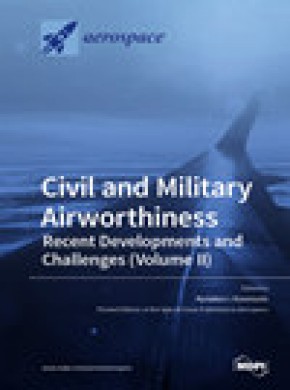
中科院分區(qū) 3區(qū)

中科院分區(qū) 3區(qū)
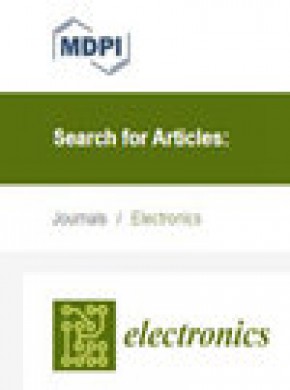
中科院分區(qū) 3區(qū)

中科院分區(qū) 3區(qū)
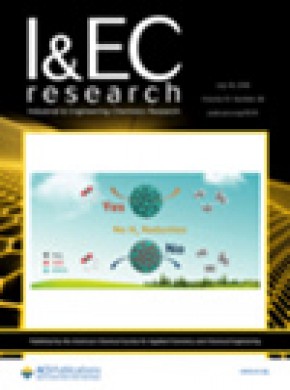
中科院分區(qū) 3區(qū)
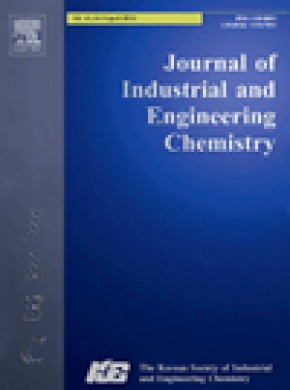
中科院分區(qū) 3區(qū)
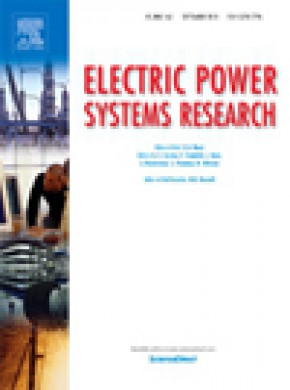
中科院分區(qū) 3區(qū)
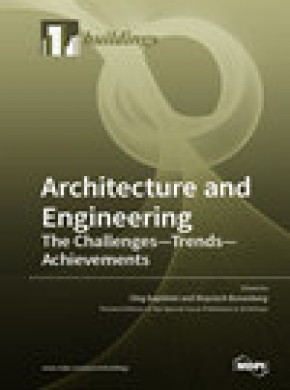
中科院分區(qū) 3區(qū)